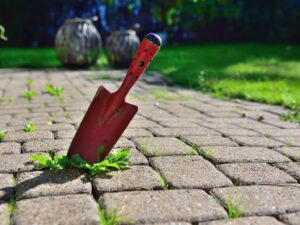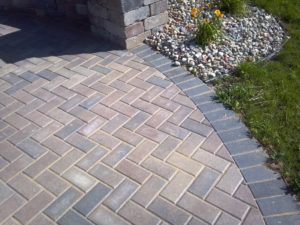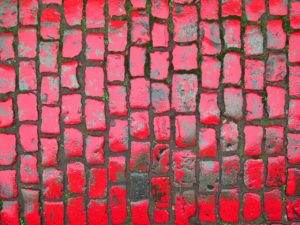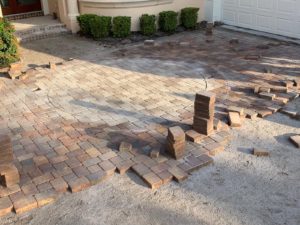Although more expensive, polymeric sand is now the best option widely used in driveway and walkway projects. This particular material exists specifically to provide a lasting bond between pavers. But unlike normal sand, the compound hardens very quickly when you expose it to moisture or water. Thus, you must remove polymeric sand from pavers’ surface before you finish your project.
Still, the polymeric sand usage in paving projects is probably one of the best choices when it comes to sand types for joints.
Here, in this article, we will walk you through the many different ways you might have to remove polymeric sand from pavers. So, don’t worry, as we will cover every possible aspect; From cleaning the pavers’ surface right after the installation to removing polymeric sand after it hardened.
How To Remove Polymeric Sand From Pavers Right After The Installation
Ideally, we recommend you remove the polymeric sand from the paver surface right after finishing your patio. The haze that shows up on the flooring occurs because there was some leftover material.
Usually, polymeric sand contains 85 – 90% quartz and crystalline silica, which is what gives the sand its notably binding power. When you wet this sand, it activates the polymers, which hardens the various components, effectively locking the pavers in place.
Below we’ve listed the necessary steps for proper paver flooring cleaning:
- To begin, avoid any contact with water or moisture before cleaning. It will be easier to remove the polymeric sand from the surface while it’s dry.
- Sweep the surface with a broom with soft bristles. So that you don’t scratch or damage the surface of the pavers.
- Repeat step two as many times as necessary to remove as much polymeric sand as possible. Sweeping the surface will also help to deposit the material into paver joints, making the most of every inch.
- Use a leaf blower to blow off any leftover.
Be very careful when using the leaf blower to remove the polymeric sand. Level it to avoid removing sand from between pavers.
How To Remove Polymeric Sand After It Hardened?
Unfortunately, if there is any polymeric sand left on the pavers’ surface, it will harden if wet, leaving a haze on top of the stones that is difficult to remove. But, you can still clean the flooring surface after that.
In some situations, when the haze on the paver’s surface is thin, you are likely to be able to wash it off with hose water. Repeat the process if necessary. But, especially if the polymeric sand layer is thick, it forms rough clumps over the surface. Probably, you won’t be able to wash it off just with hose water.
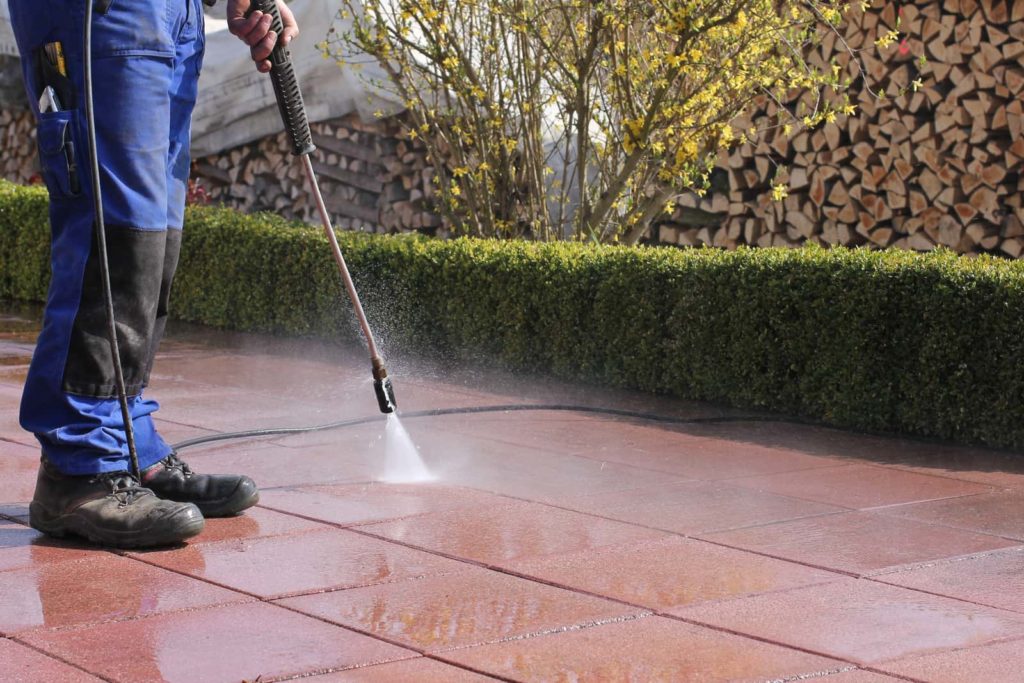
Can You Pressure Wash It?
Yes, you can use a pressure washer but strictly if necessary. If it’s not possible to remove the hardened polymeric sand after a few days washing the surface, then you can bring on the “big guns.”
The essential when using pressure wash is not to remove the polymeric sand between the joints. Thus, the most suitable pressure for cleaning pavers is the medium range (From 1600 to 2000 PSI).
For even better performance, use a hot water pressure washer at 180 ° F. The heat will reactivate the polymers in the product and allow you to strip away the sand. If it’s a smaller paver area, use boiling water.
Recommendations After Removing Polymeric Sand From Pavers
After removing the polymeric sand, it’s necessary to take some precautions:
- If you removed the polymeric sand from the pavers’ joints, you have to fill that space again. Don’t put the material into the gaps if the surface is wet or damp. Keep in mind the weather forecast, don’t do it if there is rain coming in the next few days.
- After filling in the joints with polymeric sand, take the cleaning precautions we listed at the beginning of this article.
- Wet the polymeric sand with a water hose to activate it, so that it forms the alloy that will keep pavers in place.
Another necessary precaution when finishing the whole process is to apply a sealer over the area. This substance will help to fix the polymeric sand in the joints, making it hard for the rain to wash it off, for instance.
If you have a hard time or are unsure of how to do the job, remember that you can always rely on us to guide you. Also, the complete process usually involves equipment and material that is often expensive. If fact, including your labor, it can become more costly than if you hire a company to assist you.
S&S Pavers has been proudly serving the counties of Manatee and Sarasota for the past 10+ years. If you live in Florida, don’t hesitate to give us a call.

